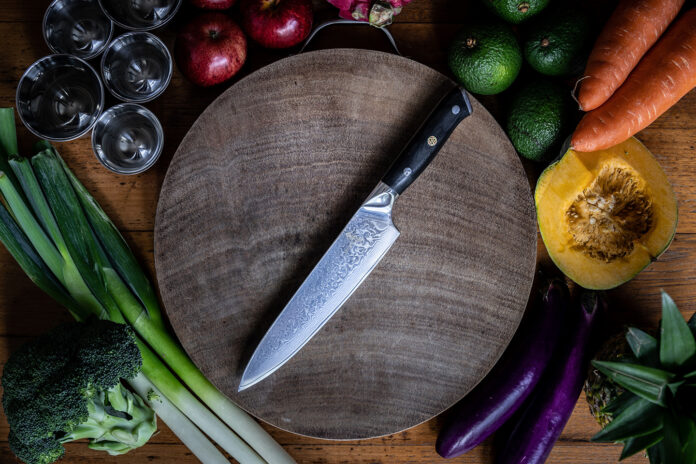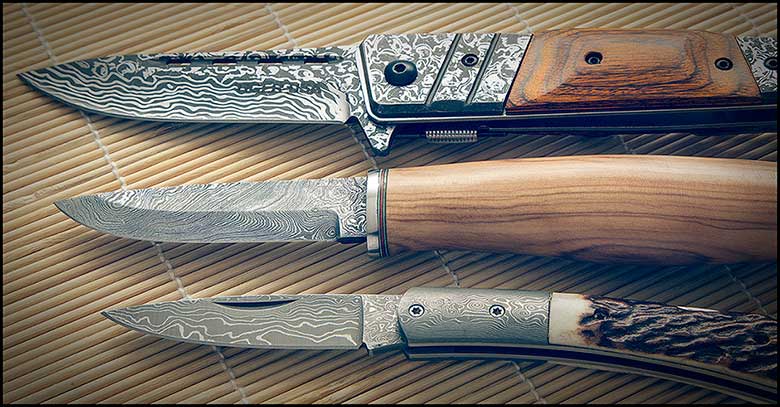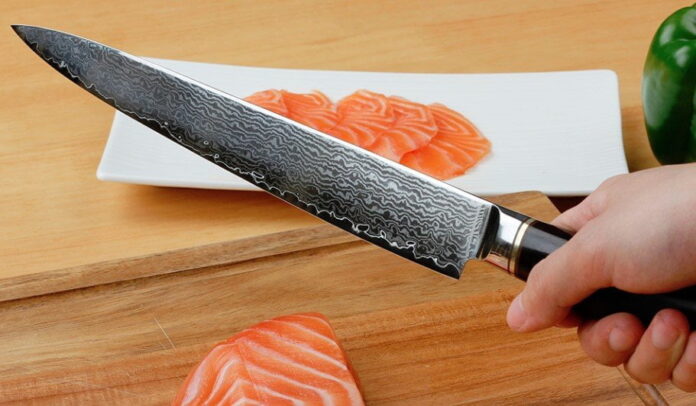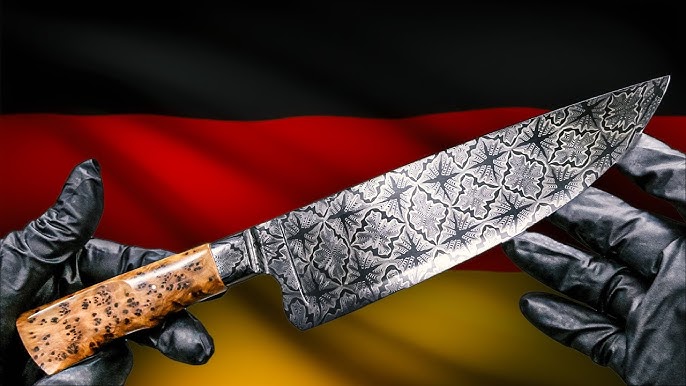Damascus knives are revered blades that hold a prominent place in both history and modern culinary arts. Originating from the ancient city of Damascus, these knives are well-known for their distinctive wavy patterns, reminiscent of flowing water, forged through a meticulous process of layering and hammering different types of steel. This age-old technique not only grants the blades their signature aesthetic but also imbues them with a combination of strength, durability, and a razor-sharp edge, traits that are quintessential to the art of fine cooking. The artistry and craftsmanship involved in the creation of each knife transform them from a mere tool to a piece of art, embodying the soul and skill of the artisan.
This article unveils the renaissance of Damascus knives in contemporary culinary arts, illustrating their integral role in the kitchens of top chefs around the world. We examine the aesthetics and functionality that make these knives a prized possession. Damascus knives are not just making a comeback, but are a testament to the seamless blend of ancient artistry and modern culinary innovation, offering an unparalleled experience that continues to captivate chefs and food enthusiasts alike.
The Resurgence of Damascus Knives in Modern Culinary Arts

Top chefs globally are rediscovering these masterpieces, drawn not only to their aesthetic grandeur but also to the unmatched precision and efficiency they bring to food preparation. In contemporary cuisine, a Damascus chef knife is more than a cutting tool; they are cherished artifacts that embody the harmony of form and function. Their integration into modern kitchens is characterized by an enhanced culinary experience, where the preparation of dishes is as much an art as it is a science. The reasons behind their soaring popularity among world-renowned chefs are manifold, including their intrinsic beauty, unparalleled sharpness, and the touch of traditional craftsmanship they lend to the cutting-edge kitchens of today, making each culinary creation a dance between the ancient and the modern.
The Allure of Damascus Knives

Aesthetic Appeal
Damascus knives are celebrated for their unique, detailed, patterns and designs, a result of the meticulous layering of different steel types. Each blade showcases a distinct, flowing pattern, making every Damascus knife a unique piece of art, captivating chefs and aesthetes alike.
The beauty of these knives is further accentuated by customization options. Chefs can possess a tool that is not only functional but also a reflection of their personal style, embedding a personal touch and character into each culinary creation.
Functionality and Performance
The allure of Damascus knives transcends their visual appeal, rooting deeply in their exceptional sharpness and precision. The blades slice through ingredients with effortless grace, enhancing the chef’s control and precision, essential for creating culinary masterpieces.
Constructed through a refined process of forging and folding, Damascus knives boast an unmatched durability and strength. They withstand the rigors of busy kitchens, retaining their edge and form, making them a favorite among professional chefs.
The thoughtful design extends to the knife’s balance and ergonomics. Each knife feels like a natural extension of the chef’s hand, promising comfort and reducing fatigue during prolonged use, marrying beauty with practicality.
Damascus Knives Across the Globe
Asian Cuisine

Damascus knives have rooted themselves deeply in Asian culinary arts, seamlessly blending the rich traditions and innovative culinary techniques. Their precision and artistry are responsible for executing the intricate cuts and meticulous preparations characteristic of diverse Asian cuisines.
European Cuisine
In European kitchens, the integration of Damascus knives marks a harmonious union of tradition and modernity. The blades are cherished for their precision, elevating the art of European culinary craftsmanship to new heights.
American Cuisine
American cuisine, known for its eclectic and innovative nature, welcomes Damascus knives as symbols of a refined fusion of age-old traditions and cutting-edge culinary artistry. These blades embody the dynamic spirit of American kitchens.
The Damascus Experience
Cooking schools and culinary institutions around the globe are increasingly incorporating Damascus knives into their curricula, underscoring the instruments’ influence in modern gastronomy. Students are granted the opportunity to experience firsthand the exceptional sharpness, balance, and precision these iconic blades offer. This exposure instigates a transformative learning experience; students’ approaches and techniques are refined, fostering a deeper understanding of the culinary arts and the tools that make the magic possible.
The Making of a Damascus Chef

A chef’s mastery and reputation are often intertwined with the tools they wield, and Damascus knives play a significant role in this equation. Utilizing these exquisitely crafted blades is more than a practical choice—it’s a rite of passage that signifies a chef’s commitment to the art and science of culinary excellence. The stories are abundant of chefs whose skills have been elevated and careers catapulted to new heights, attributing their ascent to the unmatched quality, precision, and artistry embodied in every Damascus blade. Each knife, with its unique pattern and story, contributes to the narrative of the chef, marking milestones in their journey of culinary mastery.
The resurgence of Damascus knives in contemporary culinary arts highlights a harmonious blend of aesthetic grandeur and unparalleled functionality, marking a renaissance where ancient craftsmanship meets modern culinary innovation. As more culinary aficionados embrace Damascus knives, we bear witness to a transformative era where every slice and dice is not just a step in food preparation, but also a blending of age-old traditions into contemporary culinary artistry.









